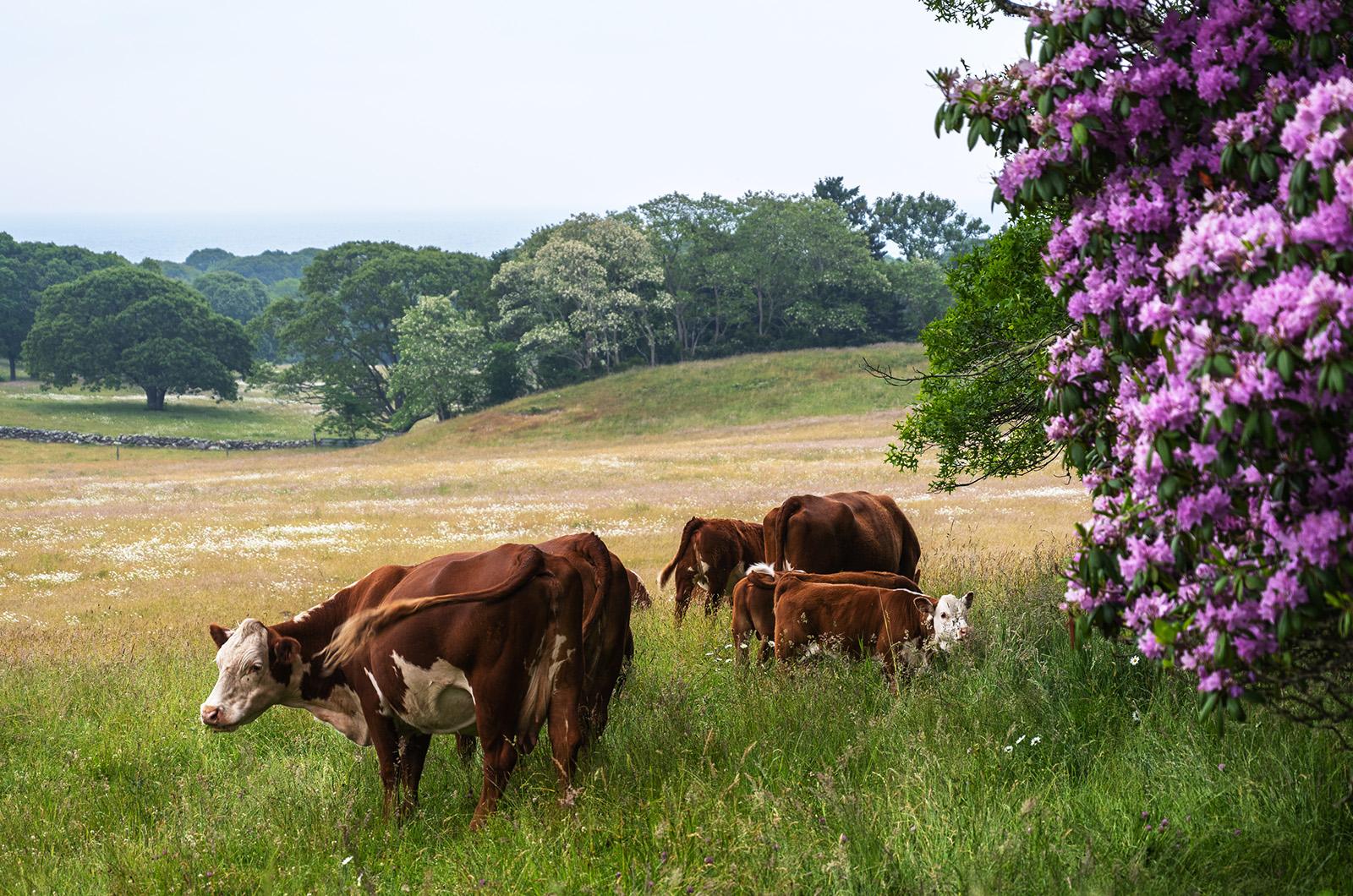Bucolic is a word that often comes to mind on the Vineyard, where jaggy oak forests give way to rolling, soft green pastures. Like many beautiful words, it has its roots in Greek. First came bous, meaning ox, then boukolos, oxherd, and finally boukolikos, the pastoral landscapes which oxherds inhabited.
A century or two ago, the Island was even more pastoral than today, back when all the forests were clearcut for pasture. Historically speaking, though, it was less bucolic, for the Island was relatively lacking in bous. Most Vineyard pasture was reserved for sheep instead of cattle.
In a classic article in Dukes County Intelligencer, Clyde L. MacKenzie Jr. notes that large-scale cattle farming on-Island didn’t emerge until the wool industry collapsed in the late 1800s, as cheaper wool from the boundless American west, and across the world, undercut our prices.
But as Island wool was beginning to collapse, another transformation was taking place on the Vineyard: the first Methodists had begun to gather in what would become Oak Bluffs, bringing with them the first rumblings of the Island as a summer destination.
The Island economy has never been the same, and farming is no exception. From the start, cattle farmers catered to the summer population as the most profitable consumer-base for their dairy and beef.
Vineyard tourism and agriculture have always had a dialectical relationship. The Island’s bucolic sheep pastures contributed to its attraction for visitors, and those visitors spurred a shift in putting cattle on those pastures. Later, as dairy became less profitable, many fields were sold off to development, serving the summer community those farms once helped to feed.
Just so, the gears of history turn, and they haven’t stopped yet.
At a livestock panel held last Friday, hosted by the Agricultural Society and moderated by Forbes agriculture writer Chloe Sorvino, Dan Athearn of Morning Glory Farm (est. ’75), Matthew Dix of North Tabor Farm (est. ’94) and Julie Scott of Slough Farm (est. 2017) discussed the state of play for the current wave of Island farmers.
“We still make about two-thirds of our money in three months,” said Mr. Dix, of their continued reliance on seasonal business.
Along with a steady stream of hungry mouths, the summer population also brings a challenge for Island farmers: land pressure.
Both Mr. Athearn and Mr. Dix agreed that the major limiting factor in livestock operations is the price of land, an ironic twist for an Island which used to be blanketed in pasture.
And, as Mr. Dix noted, what classifies as a scenic view is in the eye of the beholder.
“Everbody loves to see cows grazing in the fields,” he said, “but a veggie farm, with all that deer fencing, maybe not so much.”
A muddy pigpen, in other words, is not bucolic.
Limited Island land makes caring for local pastures all the more important, Ms. Scott said, which is no easy feat. A project she undertook converting veggie plots to pasture, she explained, required an intensive rotation of pigs, turkeys, sheep and cover cropping.
The key, she said, was “thinking of yourself as a grass farmer versus a livestock farmer.”
Still, most Island livestock farmers depend on off-Island hay to supplement their pastures and hayfields, and that off-Island supply is far from secure. Ms. Scott said that, last year, excessive rain in Canada and upstate New York disrupted the hay market. At the same time, a dry Vineyard summer hampered Island pasturage as well.
It seems the grass farms have their work cut out for them in the decades ahead, as conditions doubtless will continue to shift. Seasons will come and go, bringing with them the ebb and flow of summer residents.
And history will continue its steady march, slow and cyclical, like the wheels of an oxcart.







Comments
Comment policy »